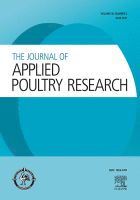Improving broiler performance at market age regardless of stocking density by using a pre-starter diet
R. Franco-Rossello*, A. Navarro-Villa*, J. Polo y , D. Sola-Oriol z , A. I. Garcıa-Ruiz*
* Trouw Nutrition R&D, Ctra. CM-4004 km 10.5, El Viso de San Juan, Toledo, 45950, Spain;
y APC Europe, S.L., Granollers 08403, Spain;
z Animal Nutrition and Welfare Service, Department of Animal and Food Science, Universitat Autonoma de Barcelona (UAB), 08193, Spain
- Poultry
- Broilers
- 2022
- Open Access
A. Navarro-Villa, J. Polo, D. Solà-Oriol, Ana Isabel Garcia-Ruiz

SUMMARY
Broiler early nutrition has caught the attention of nutritionists due to the positive correlation
between early growth rate and market weight. Early nutrition strategies such as low Ca levels
or the use of highly digestible ingredients (e.g., spray-dried porcine plasma [SDPP]) have been
reported to improve gut and muscle development, immunity, and overall growth of the bird.
On the other hand, recent works suggested that stocking density represents the main constrain
for modern chickens to express their full genetic potential. The current study aimed to elucidate
the potential effects of pre-starter feeding strategies on contrasting livestock stocking densities.
The study followed a factorial design of 2 contrasting starter programs (standard [0−11d] vs.
pre-starter [0−4 d] + standard [4−11 d]) by 3 stocking densities (low, medium, and high, 27,
33, and 39 kg/BW/m2, respectively). Birds placed at low stocking density showed higher BW
and better FCR than those at high stocking density (P < 0.05) being this evident only after d
28. On the other hand, birds fed on pre-starter diet led to higher BW at 4 d (P < 0.001) and
the effects on BW were maintained until market age (+2.54%; P < 0.05). The pre-starter diet
also led to heavier carcasses (+2.2%; P < 0.05), improved uniformity (P < 0.10) and showed a
lower incidence of lameness at high stocking densities (P < 0.05) compared to birds fed the
standard starter diet. Results of the current study confirm that, regardless of the stocking density
used, pre-starter diets (0−4 d) could lead to a better early growth and market weight.
Key words:
- broiler
- pre-starter diet
- stocking density
- performance